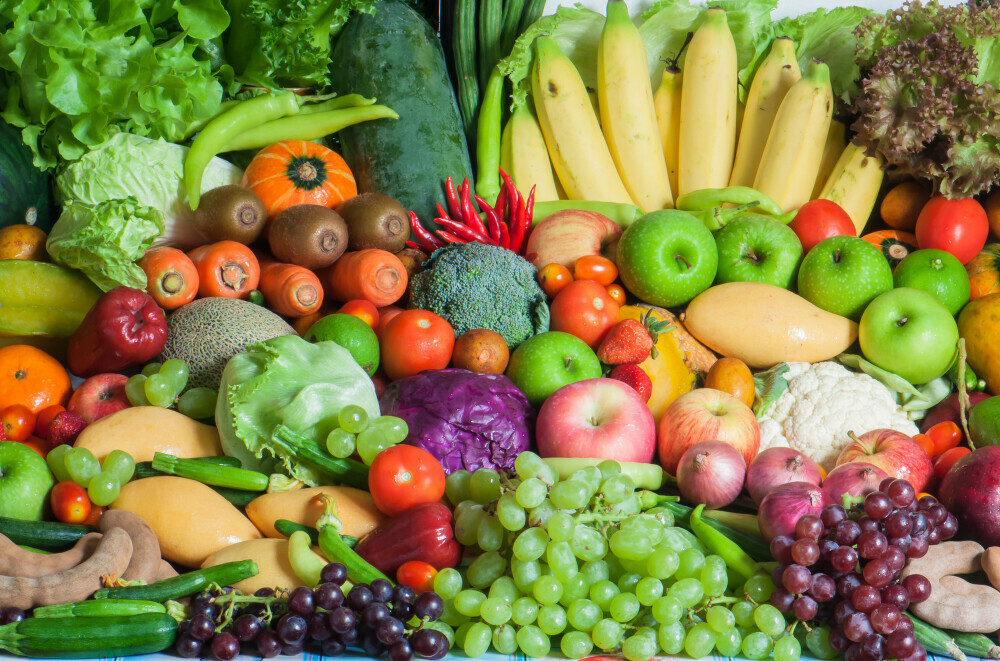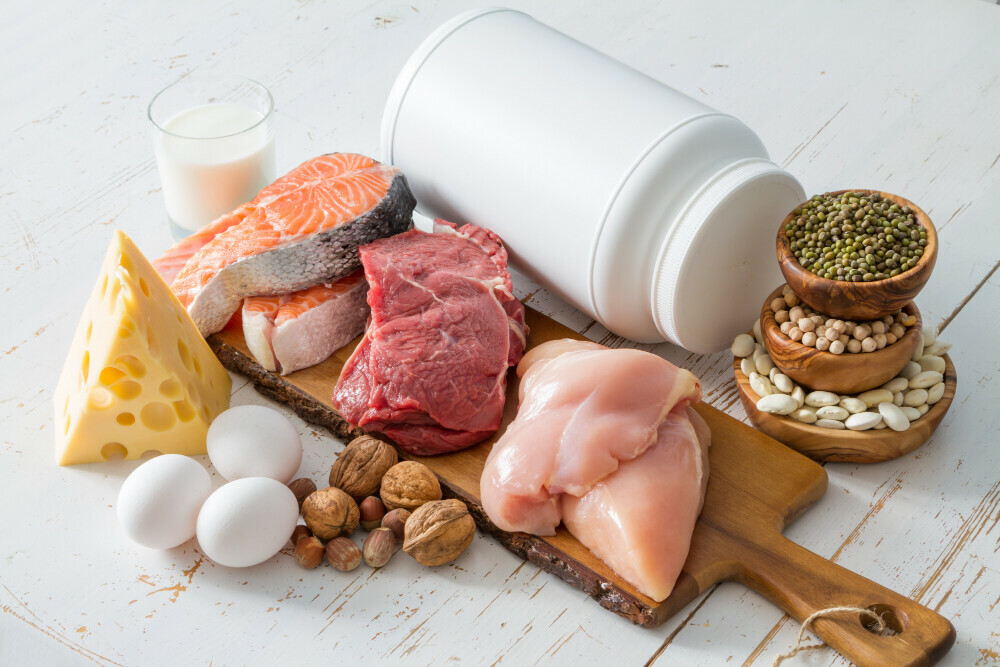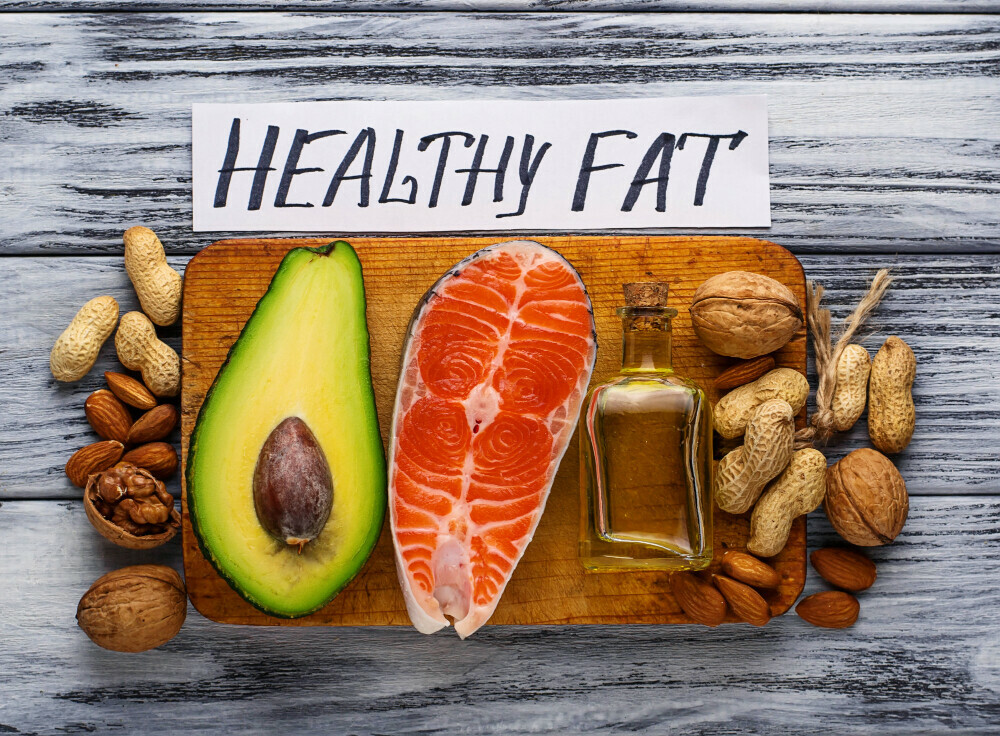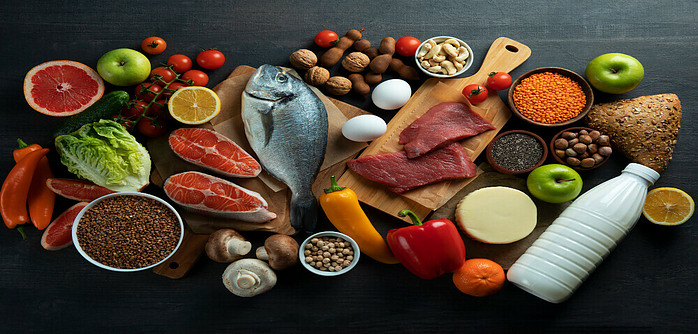Balanced Diet: 5 Features to Unlock the Body’s Potential
To kick things off, I’ll shed some light on a balanced diet. While it sounds straightforward, there’s a richness to the concept that’s worth exploring. In simple terms, it’s about ensuring your body receives nutrients from various foods while not overdoing any food groups.
Variety, moderation, and balance are the pillars of a balanced diet. Think of it as your culinary playlist: a mix of different genres to keep things interesting, the right volume to not overwhelm your senses, and a rhythm that energises you throughout the day. Every song or food group has its moment to shine.
You’ll learn about each food group’s vital role in your health. Carbohydrates, proteins, and fats–yes, even fats! – along with vitamins and minerals, compose the lineup of nutritional heavy-hitters that keep your body performing at its best.
It isn’t about what to eat but how these foods work together. When you balance your plate correctly, you support your body’s diverse needs, from bone health to brain function, without tipping the scales toward excess or deficiency.
I’m here to help you with practical advice on designing meals that satisfy these principles. Your first attempt doesn’t need to be your last; you can always adjust your approach when needed. Choose something that resonates with you and your lifestyle and build from there.
Contents
The Spectrum of Health: Fruits and Vegetables at the Core

We’ll highlight why fruits and vegetables should be starring in your daily diet. It isn’t about the striking colours on your plate but the essential nutrients they provide. You’ll learn about the powerhouse of vitamins, minerals, and fibres these foods offer. Other food groups don’t contain the same range of nutrients.
Choosing fruits and veggies isn’t merely picking out food; it’s selecting building blocks for your body. These foods are chock-full of antioxidants, which battle against oxidative stress and inflammation. And guess what? The assorted colours represent different nutrients, so when I talk about ‘eating the rainbow,’ it’s more than just a fun phrase—it’s vital counsel for diversifying your nutrient intake and supporting a balanced diet.
I hope you’re not just fixated on their sugar content because here’s where it gets interesting. Fruits like berries, apples, and pears have a low glycemic index, meaning less impact on blood sugar levels. And veggies have a wide array of low-sugar options, from leafy greens to cruciferous powerhouses like broccoli and cauliflower. I’ll help you figure out portion sizes so that you get the benefits without overindulgence.
Now, let’s cut to the next section, where I will explain the ins and outs of whole grains. You’ll discover their role in maintaining your health and how to integrate them into your diet without feeling like you’re eating the same thing every day.
Whole Grains: Your Body’s Sustainable Energy Source
Here’s something that might change your thoughts about bread, pasta, and rice. Whole grains – they’re not just another item on the grocery list. They’re your body’s sustainable energy source. You might wonder, “What exactly sets whole grains apart from the refined grains I’m used to?” Well, it boils down to nutrition. Unlike refined grains, which have had most of their goodness stripped away, whole grains come packed with fibre, vitamins, minerals, and other beneficial compounds.
Now, what is the big deal about these nutrients? They play a crucial role in keeping your digestive system running smoothly, supporting heart health, and helping you manage your weight. Choose something that resonates with you. Whether it’s the nutty taste of brown rice, the ancient origins of quinoa, or the hearty texture of oats, there’s a whole grain out there that’ll make your meals both nutritious and delicious and add to your balanced diet.

You can adjust your approach when required, but adding whole grains to your diet isn’t just a one-and-done kind of thing. So here’s a picture for you: Imagine starting your day with steel-cut oats topped with a handful of berries or switching up your white rice dinner side with a fragrant quinoa salad.
Pretty wild, right? But let’s not stop there. Next up, we’re going to tackle lean protein. It’s a powerhouse in maintaining and building muscle, and just like with whole grains, it’s all about picking suitable sources and nailing those portion sizes.
Power Up with Lean Protein: A Primer on Sources and Portions
The world of lean proteins is diverse and includes plant-based and animal sources. You’ll learn about beans, lentils, fish, and chicken, and I’ll help you understand how much you need to fuel your day.
Regarding portion control, it’s not just about the quantity; it’s about getting quality protein without overdoing it. A handy tip is that a single portion of meat is roughly the size of your palm.
While size does matter for a balanced diet, you also need to dial down on healthy cooking methods. Grilling, baking, or steaming keep these proteins as nutritious as possible.

Remember, choosing the correct types of protein with appropriate preparation significantly impacts your overall health. This ties in closely with our next section, which is all about fats — but not just any fats.
Healthy Fats: Unveiling the Truth Behind the Myth
Not all fats are bad for you – to bust a big myth. In fact, your body needs fats for energy, to absorb specific vitamins, and for cell growth. But I’m not talking about just any fats; I’m particular about unsaturated fats.
Unsaturated fats come in two primary forms: monounsaturated and polyunsaturated. These are the good guys in the fat world and help maintain a balanced diet. They contribute to lowering bad cholesterol levels and are vital for brain health and keeping your heart in top shape. Think of foods like avocados, packed with monounsaturated fats, or nuts and seeds teeming with monounsaturated and polyunsaturated fats.

To incorporate healthy fats into your meals without much fuss drizzle some extra virgin olive oil over your salad, snack on a handful of almonds, or top your toast with creamy avocado. These small changes can make a big difference to your health. And yes, they can be absolutely delicious.
Choose something that resonates with you; it’s your diet after all. If you adore nut butter, great. Add your preferred butter to your morning smoothie or oatmeal. If you’re a fan of seafood, fatty fish like salmon are rich in omega-3 fatty acids, which are good for heart health. And these healthy fats don’t just come on strong—they’re also the subtle heroes found in foods like flaxseeds and chia seeds.
Beyond Nutrition: How A Balanced Diet Elevates Your Life
I really hope that you’ve realized that eating well with a balanced diet goes far beyond just filling your stomach. It’s not an overstatement to say that the quality of your life can be enhanced by what you choose to put on your plate. When you commit to a balanced diet, you’re taking a powerful stand against chronic diseases. You might be wondering, ‘How does that work?’ Well, with every fibre-rich vegetable, lean protein, and whole grain, you’re contributing to a shield that defends against ailments like heart disease, diabetes, and certain types of cancer.
This isn’t just about dodging illness, though. Balanced eating is your faithful ally if you want to feel light on your feet and ready to take on the day’s challenges. It’s the secret to maintaining a healthy body weight and eliminating the worry of obesity-related complications. Take notice of how foods high in fibre and protein keep you feeling full longer, helping you avoid unnecessary snacking and weight creep.
Eating optimally balanced meals ensures your energy doesn’t spike and crash with every meal. Instead, they lend you a sustained vigour that carries you throughout the day without the mid-afternoon slump. Imagine feeling just as spirited and focused at 3 p.m. as you did with your morning coffee.
Lastly, let’s not forget about your immune system – that quiet guardian that works tirelessly to keep you healthy. Befriending the right mix of vitamins and minerals through a diet rich in fruits, vegetables, and nuts catapults your immune response to new heights. It means less time being sick and more time enjoying life’s pleasures.
So, there’s an opportunity to transform your dining table into a feast of balance and moderation. It’s not about perfection; it’s about making better choices consistently. Start with one meal, one snack, one choice at a time, and you’ll soon discover the transformative power of eating well. So, what’s your next move going to be?
Resources:




